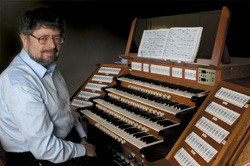Audio Balancing Acts

- The world is a very dangerous place today if you are an innocent piece of clean audio trying to get from A to B. The air is full of electromagnetic radiation that exists over a massive range of frequencies all the way from AC mains up to mobile phones and even beyond into radar, and we have to find ways of keeping this interference out of our pristine audio. We are mostly concerned with the audio engineer's old enemy-buzz from lighting and mains cables-but we cannot ignore the effect of frequencies beyond the audio spectrum.
Most of our audio cables are screened, and this does a decent job in keeping the radio frequencies (RF) at bay, but doesn't do anything much to keep out the signals that we can hear, because these attack our audio largely by long wave length electromagnetic fields which go straight through the expensive foil wrap and braided screen protection around our cables.
Our telephone lines, however, run over vast distances but are unscreened, yet work just fine, and the BBC used to run hundreds of meters of unscreened cable all around its Langham Place complex with no problems. How? Very early in the history of telecommunications it was realized that if you drive audio across a pair of wires and twist these wires together, either wire has the same statistical chance of picking up some unwanted mush as its twisted partner. The resulting signal appearing equally on both wires is known as a common mode signal, and how well it is rejected by the audio circuitry is known as the common mode rejection ratio or CMRR.
When buzzy interference is heard, most people blame the input stage, but it doesn't matter how good the CMRR of your input stage is if the unwanted signal on your audio cable isn't common mode, so how can we make sure that it is? These airborne signals can impress themselves on the two wires by the impedance that each wire presents to the unwanted signal.
It is essential that these two impedances are "balanced," and if they are, then you have a truly balanced line. It is very easy to make the source impedance of the hot and cold signals equal by connecting a 75-ohm resistor between the op-amp output pin and the hot wire, and a matching resistor between the audio ground nearest to this op-amp output and the cold wire. This is known in common parlance as impedance balancing and is tremendously effective, takes no additional circuitry and is therefore the most cost-effective solution.
You might be surprised to know that the vast majority of condenser microphones, including some of the most expensive on the planet, use this method. Now if this is acceptable at mic level then, logically, it must be brilliant at line level, so why use any other method? Apart from using a transformer, which does a marvelous job in input and output stages but is large, heavy and expensive, the "other" method is differential balancing.
In this method, two op-amps drive the audio signal to both hot and cold wires, the signal to the cold wire being an inverted copy of the hot. Let's be clear from the start here: If the source impedance of each of these signals was not identical (i.e., balanced), the method would fail completely, the matching of the differential audio signals being irrelevant, though desirable for headroom considerations. However, there is an interesting technical reason that supports the differential solution, particularly over long distances. At frequencies above the audio range, the output impedance of the op-amp driving the hot wire in our simple classic impedance balanced circuit begins to rise, whereas its balancing resistor in the cold wire stays substantially the same, thus creating a very small imbalance.
However, in the differential solution, the cold wire is driven from an op-amp that is identical to that driving the hot wire, thus preserving the balance over a wider frequency range. Over long distances this can make a difference in difficult environments, hence you will find differential balancing on the main outputs in more expensive consoles that might be used in bigger installations and touring situations where cable runs can be considerable.
A daily selection of the top stories for AV integrators, resellers and consultants. Sign up below.
Two other features make the differential method attractive. Firstly, you can drive 6 dB more level down the cable before dropping it 6 dB at the other end, thus gaining 6 dB of common mode rejection, but this is almost never done for standardization reasons. Secondly, most implementations of differential balancing can be unbalanced by shorting out either cold or hot to ground, with no change in signal level. This can save the day if someone has picked up a wrongly wired or faulty cable, though it can hardly be said to encourage good practice on the road.
It is rare to find unanimity amongst audio gurus, but without exception they will all say that the only true balanced line is an impedance-balanced line. Unfortunately, there is a lot of marketing hype and uninformed peer pressure that will try to tell you that the only true balanced line is one that has opposite phase audio signals on each wire. This is not the reason that makes differential balancing worth paying more for over the simple elegance of impedance balancing. If your cable runs are going to be really long (more than 100m), then you might benefit from the balance in hot and cold impedances across a wider bandwidth that differential balancing offers, but for line-level signals, it's very much a marginal call.
